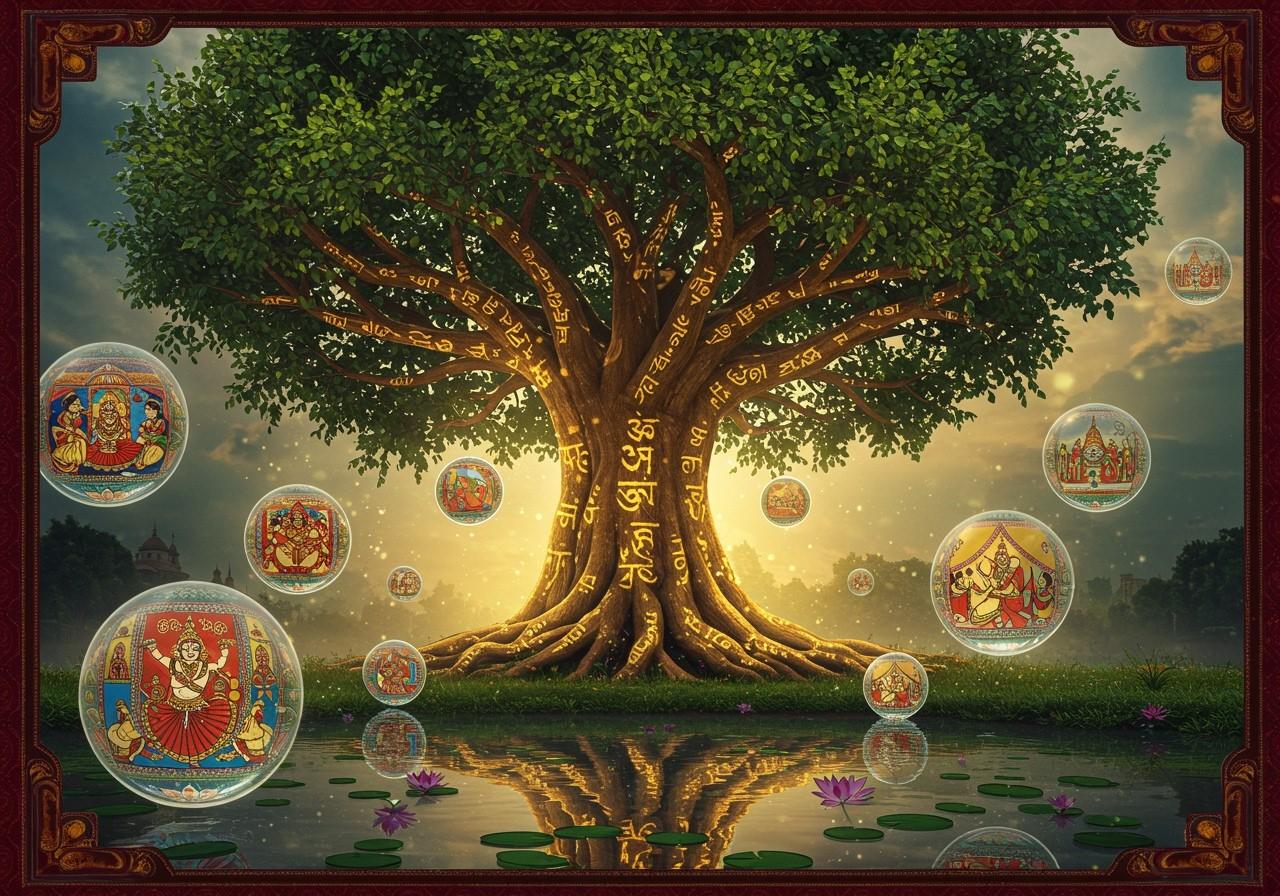Exploring the Tapestry of Languages in India

India, a land of vibrant cultural heritage, boasts a remarkable linguistic diversity. Its languages reflect its rich history and traditions, shaping its identity as a multicultural society. Embracing these languages offers a unique opportunity to connect with cultural roots, albeit with the challenges and rewards of navigating a multilingual landscape. This exploration delves into the major language families, popular languages, learning resources, and the importance of linguistic diversity in India. Discover the beauty and complexity of India’s linguistic tapestry.
A Journey Through Time: The Historical Context of Indian Languages
The languages of India have a rich history, evolving over millennia. Ancient civilizations laid the groundwork for this linguistic diversity, with Sanskrit, one of the oldest languages, influencing many modern Indian tongues. The influence of Sanskrit can be seen in vocabulary, grammar, and even script in various Indian languages. As centuries passed, the impact of Persian, Arabic, and European languages became evident during periods of invasion and colonial rule. Persian and Arabic contributed significantly to Urdu, while European languages like English left their mark on administrative and educational systems. Post-independence India witnessed the standardization and development of modern languages, contributing to the socio-political landscape we see today.
Understanding this historical context allows us to appreciate the complex evolution of India’s linguistic diversity. It showcases how languages have adapted and survived through centuries, reflecting the resilience and cultural exchange within the country. The evolution of Indian languages shows how they have played a unifying role in weaving together diverse cultural narratives, creating a unique linguistic heritage.
The Major Languages of India: A Symphony of Voices
India’s linguistic diversity is truly captivating. The Eighth Schedule of the Indian Constitution recognizes 22 official languages, each with its unique cultural significance. While Hindi, spoken by a significant portion of the population, serves as a common language across regions, the importance of other languages like Bengali, Marathi, Telugu, Tamil, and Urdu cannot be overlooked. These languages are not mere tools of communication; they represent the cultural richness and identity of various regions, carrying the weight of history and tradition.
The regional distribution of these languages creates a vibrant mosaic, reflecting the cultural nuances of each region. For instance, South India predominantly uses Telugu and Tamil, while Marathi thrives in the western state of Maharashtra. The regional concentration of languages ensures that the cultural nuances and specific needs of the local population are met. These languages play vital roles in education, media, and government, contributing to India’s rich cultural and political landscape.
Beyond the Major: The Richness of Dialects in India
Beyond the officially recognized languages, India is home to countless dialects, reflecting the local traditions, folklore, and unique stories of various communities. These dialects contribute to the richness of India’s cultural heritage, often representing subtle variations in pronunciation, vocabulary, and even grammar. However, preserving these dialects is crucial in the face of modernization and urbanization, as they often represent the intangible cultural heritage of smaller communities. Efforts to document and protect these dialects are vital for maintaining India’s linguistic diversity and ensuring that these unique forms of expression are not lost to time.
Various organizations and government initiatives are working to protect this linguistic diversity. These efforts include promoting the use of regional dialects in education, literature, and local media. Documenting and archiving these dialects are crucial for safeguarding them for future generations. Initiatives by cultural institutions and research centers are also contributing to preserving and promoting the study of India’s diverse dialects. Their role in local literature, music, and oral traditions adds depth and nuance to India’s artistic expressions.
Embarking on a Learning Journey: How to Learn Indian Languages
Learning an Indian language opens a doorway to a deeper understanding of its culture and people. The first step is to identify your learning goals. Are you interested in conversational fluency, reading literature, or connecting with family and cultural roots? Based on your objectives, choose a language that aligns with your interests and needs. Whether it’s the widely spoken Hindi or a regionally prominent language like Telugu or Tamil, the journey of language learning promises rich cultural immersion.
A plethora of resources are available for aspiring language learners. Language learning apps like Duolingo and Memrise offer interactive exercises and gamified learning experiences, making the process engaging and accessible. Online platforms such as italki connect learners with language tutors for personalized instruction and language exchange partners for conversational practice. Immersive experiences, like watching movies and listening to music in the target language, can greatly enhance comprehension and pronunciation. Learning the script, while challenging, can significantly deepen your understanding and appreciation of the language.
Languages of India for Kids: Nurturing Cultural Roots
Introducing children to Indian languages at a young age can be a fun and educational experience. Early exposure not only aids cognitive development but also fosters a deeper understanding of cultural heritage. Interactive learning tools, including educational games and apps designed specifically for children, make the learning process engaging and enjoyable. By incorporating language learning into playtime, children can develop a natural affinity for their heritage language.
Traditional media, including storytelling and folk songs, play a significant role in language acquisition for children. Parents and educators can encourage language learning through simple activities at home and in the classroom. Creating a supportive and immersive environment is key to nurturing a lifelong connection to their heritage. This early introduction to language can also spark a lifelong interest in exploring different cultures and perspectives.
Test Your Knowledge: Languages of India Quiz
Want to test your knowledge about the diverse languages of India? Engage with interactive quizzes and online resources that explore the demographics and historical facts of India’s linguistic tapestry. Challenge friends and family to see who knows the most about India’s languages, sparking friendly competition while learning. These quizzes can also be a great way to identify areas for further learning and exploration. Delve deeper into the fascinating world of Indian languages and uncover hidden gems of linguistic knowledge.
Embrace the beauty of India’s diverse languages. Each language acts as a window into a unique cultural world, offering a rich and rewarding experience for learners. Explore the linguistic diversity of India and enrich your understanding of this vibrant nation’s cultural heritage. Every language learned represents a new perspective gained and a deeper connection forged with India’s cultural tapestry. Embrace the journey of language learning and discover the treasures within each language.
How Poojn.in Helps You Connect with India’s Languages
India’s languages carry deep spiritual meanings, especially in religious items and rituals. At Poojn.in, India’s largest cultural goods and services store, we offer authentic puja items labeled in multiple Indian languages. This helps you learn traditional names while shopping for your spiritual needs. For example, we list camphor tablets with their names in different languages – Kapura (Gujarati, Marathi, Punjabi), Karpura (Sanskrit, Kannada), and Pacha Karpooram (Tamil). This multilingual approach makes your shopping experience more meaningful and educational.
Our product descriptions include the original Sanskrit names along with translations in major Indian languages. This helps you understand the cultural and spiritual significance of each item while learning key religious vocabulary. For instance, a Bel Mala description would include its Sanskrit name ‘Bilva Mala’ alongside regional variations. Our website also supports multiple Indian language interfaces, making it easier for you to shop in your preferred language and further connect with your cultural heritage.
We stock a wide range of essential puja items, including:
- Camphor tablets (with names in 8 Indian languages): Camphor is an integral part of many Hindu rituals, and understanding its various names adds depth to your practice. Explore our collection and discover the linguistic diversity associated with this sacred item.
- Kumkum (regional variations of names included): Kumkum, a symbol of auspiciousness, has different names across regions. At Poojn.in, we showcase these variations, allowing you to learn about the diverse cultural interpretations of this significant item.
- Agarbatti (incense sticks with traditional names): Agarbatti, used to create a sacred atmosphere, has traditional names rich in cultural meaning. Discover the diverse names of Agarbatti across different Indian languages on Poojn.in.
- Puja thalis (with regional naming conventions): Puja thalis, essential for Hindu worship, have unique names in different regions. Poojn.in provides a platform to learn about these variations while choosing the perfect thali for your needs.
Poojn.in is more than just a shopping platform; it’s a resource for learning about Indian culture and traditions. Explore our collection and enrich your understanding of religious terminology in various Indian languages. Our aim is to connect you with India’s rich cultural heritage through the medium of language.
Embracing India’s Linguistic Heritage: A Celebration of Diversity
India’s languages are more than just words; they are the living embodiment of its diverse culture and traditions. They carry the stories, wisdom, and spirit of its people, passed down through generations. As learners, we have the privilege of connecting with this heritage, gaining a deeper appreciation for India’s vibrant cultural tapestry. Whether motivated by personal growth or cultural exploration, each language offers a unique journey of discovery. Embrace this diversity with open hearts and minds, and let the languages of India enrich your lives.
FAQs on India’s Languages: A Complete Guide for Learners
What are the major languages spoken in India?
India recognizes 22 languages officially, including Hindi, Bengali, Telugu, Marathi, Tamil, Urdu, Gujarati, Malayalam, Kannada, and Odia. Hindi is the most widely spoken, serving as a lingua franca in many regions.
How many languages are there in India?
India is home to a vast number of languages and dialects. While the official count stands at 22, the actual number runs into the thousands, a testament to India’s incredible linguistic diversity. This diversity stems from a multitude of ethnic and cultural influences throughout India’s history.
Why is Hindi considered the most spoken language in India?
Hindi’s widespread use, especially in North and Central India, contributes to its status as the most spoken language. Its use in government, education, and media makes it widely accessible across these regions. Hindi also serves as a common link language between speakers of different regional languages.
What is the importance of learning regional languages in India?
Learning regional languages unlocks a deeper understanding of India’s diverse cultures, traditions, and local customs. It fosters better communication with people in different regions, strengthening interpersonal connections. This understanding can be particularly valuable in professional and social settings, enriching interactions and building stronger relationships.
Are all Indian languages written using the same script?
No, Indian languages utilize a variety of scripts, each with its own unique characteristics and history. Hindi uses Devanagari, while Tamil and Telugu each have their distinct scripts. Other scripts, like Bengali, Gurmukhi (for Punjabi), and Malayalam, further showcase the diversity of written communication in India. Learning a new script can be a rewarding aspect of language acquisition.
How can kids learn the languages of India?
Children can embark on language learning through various engaging methods. Educational programs designed specifically for kids offer interactive learning experiences. Language apps provide gamified lessons and exercises, making learning fun and accessible. Attending language classes or engaging with native speakers through conversation and storytelling creates immersive learning opportunities that can foster a natural love for the language.
Is there a quiz to test knowledge of India’s languages?
Yes, numerous online platforms offer quizzes and interactive tests designed to assess and improve understanding of India’s diverse languages. These quizzes provide a fun and engaging way to test your knowledge and identify areas for further exploration. Some quizzes even offer personalized feedback and recommendations for learning resources, allowing you to tailor your language learning journey.
How does language diversity affect communication in India?
While language diversity can sometimes pose communication challenges, India’s multilingualism often bridges these gaps. Many Indians are multilingual, able to converse in multiple regional languages and often English or Hindi. This multilingualism fosters communication and cultural exchange across diverse regions. The prevalence of English and Hindi as link languages further facilitates communication in various settings.


